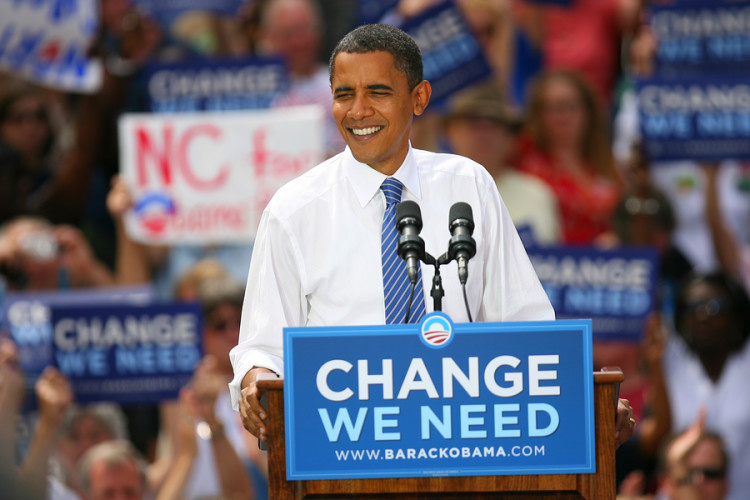Failing Dam Is a Symbol of U.S. Infrastructure: Barry Ritholtz

published Feb 16th 2017, 1:15 pm, by Barry Ritholtz
(Bloomberg View) —
The sorry state of American infrastructure is once again our focus. This time the peg is the Oroville Dam in California. It is the U.S.’s tallest dam, and it is in trouble. An emergency spillway was damaged, causing evacuation of 188,000 Californians.
State and federal officials ignored the warnings of environmental groups who for more than a decade have been asking them to reinforce the dam’s spillway.
As regular readers know, failing infrastructure is a theme I’ve pounded on again, again and again.
How did we get to this sorry state? The short answer is partisan politics, informed by bad ideology and a focus on little more than the next election.
Does anything reflect the state of American short-termism more than the slow, inevitable decay and eventual failure of key components of our transportation, electrical, water and sanitation systems? These are the most basic services government provides. The inability to do what so many other developed nations do so much better is why I have called each of the past 10 Congresses “the worst ever.”
Both political parties are to blame — but rather than engage in the classic false equivalency debate, let’s consider how each has contributed to the current dismal state of affairs. I am not so much looking to cynically assess blame as I am to optimistically find the silver lining in this dark structural cloud.
Let’s go back a few years to 2009, when the new Barack Obama administration got Congress to pass the American Recovery and Reinvestment Act, a stimulus package meant to blunt the recession touched off by the financial crisis. This $800 billion program was mostly about the very short term, and not about long-term investment.
About a third of the stimulus package — $288 billion dollars — was a combination of temporary tax cuts and other incentives designed to spur spending. Another $155 billion was for health-care, $100 billion went to education and $82 billion was for aid to low-income workers and the unemployed.
What was left for infrastructure? A measly $105 billion, or about 13 percent of the total. Worse still, most of these projects were of the shovel-ready variety.
This was a terrible error by Obama. As Columbia University professor of economics Jeffrey Sachs repeatedly has observed, America has an infrastructure investment crisis; the focus on short-term fixes has set us up for long-term failure.
Shovel-ready — what we can throw money at today — is the exact opposite of long-term strategic planning. That would involve thinking about how to improve our electrical grid, modernize the deteriorating U.S. transportation system and upgrade the water and sewer networks critical to public health. New York City, for example, relies on a system of tunnels and aqueducts to supply drinking water to more than 10 million people. Parts of that system are more than a century old.
It’s been pretty well established in the economic literature that improved public infrastructure contributes to private sector productivity. It has been estimated that by 2025, shortfalls in infrastructure investment will subtract as much as $3.9 trillion from U.S. gross domestic product. Traffic jams alone cost the U.S. tens of billions of dollars a year in lost productivity.
As bad as Obama’s infrastructure performance was, his best excuse has been pointing to the sheer abdication of responsibility by the Republicans. Wherever you see rust or decay, much of that can be attributed to GOP obstructionism. I personally hold Grover Norquist, president of Americans for Tax Reform — the group behind a pledge opposing any and all tax increases that almost every Republican legislator signs– responsible for every pothole in America.
The refusal to consider even the most rational of tax increases, such as the funding of the highway trust fund via the federal fuel tax, is maddening. The tax, which isn’t really a tax but a user fee imposed only on motorists, hasn’t been increased since it was raised in 1993, to 18.4 cents a gallon. Meanwhile, like so much else, the cost of construction and maintenance has risen steadily during the past 25 years. Here is a chart showing the cost of construction materials since the tax was last raised:
Across the entirety of America’s infrastructure, our leaders have allowed the nation’s major overseas competitors, including China, Germany and Japan, to gain an enormous strategic and economic advantage. The productivity increases and financial benefits of a fully modernized, technologically advanced economy are being reaped by the U.S.’s rivals. This is a huge disadvantage to the corporate employers who invest and hire in the U.S. This neglect and underinvestment makes the U.S. less competitive globally in attracting investment, and intellectual and human capital.
During the election campaign, Donald Trump talked about embarking on a $1 trillion infrastructure-spending program. So far, it’s just talk and there is no evidence that Republicans in Congress have much any interest.
The U.S. has to start playing catch up to the rest of the developed world. It’s long overdue.
This column does not necessarily reflect the opinion of the editorial board or Bloomberg LP and its owners.
Barry Ritholtz is a Bloomberg View columnist. He founded Ritholtz Wealth Management and was chief executive and director of equity research at FusionIQ, a quantitative research firm. He blogs at the Big Picture and is the author of “Bailout Nation: How Greed and Easy Money Corrupted Wall Street and Shook the World Economy.”
To contact the author of this story: Barry Ritholtz at britholtz3@bloomberg.net To contact the editor responsible for this story: James Greiff at jgreiff@bloomberg.net
For more columns from Bloomberg View, visit Bloomberg view
COPYRIGHT© 2017 Bloomberg L.P



No Comment